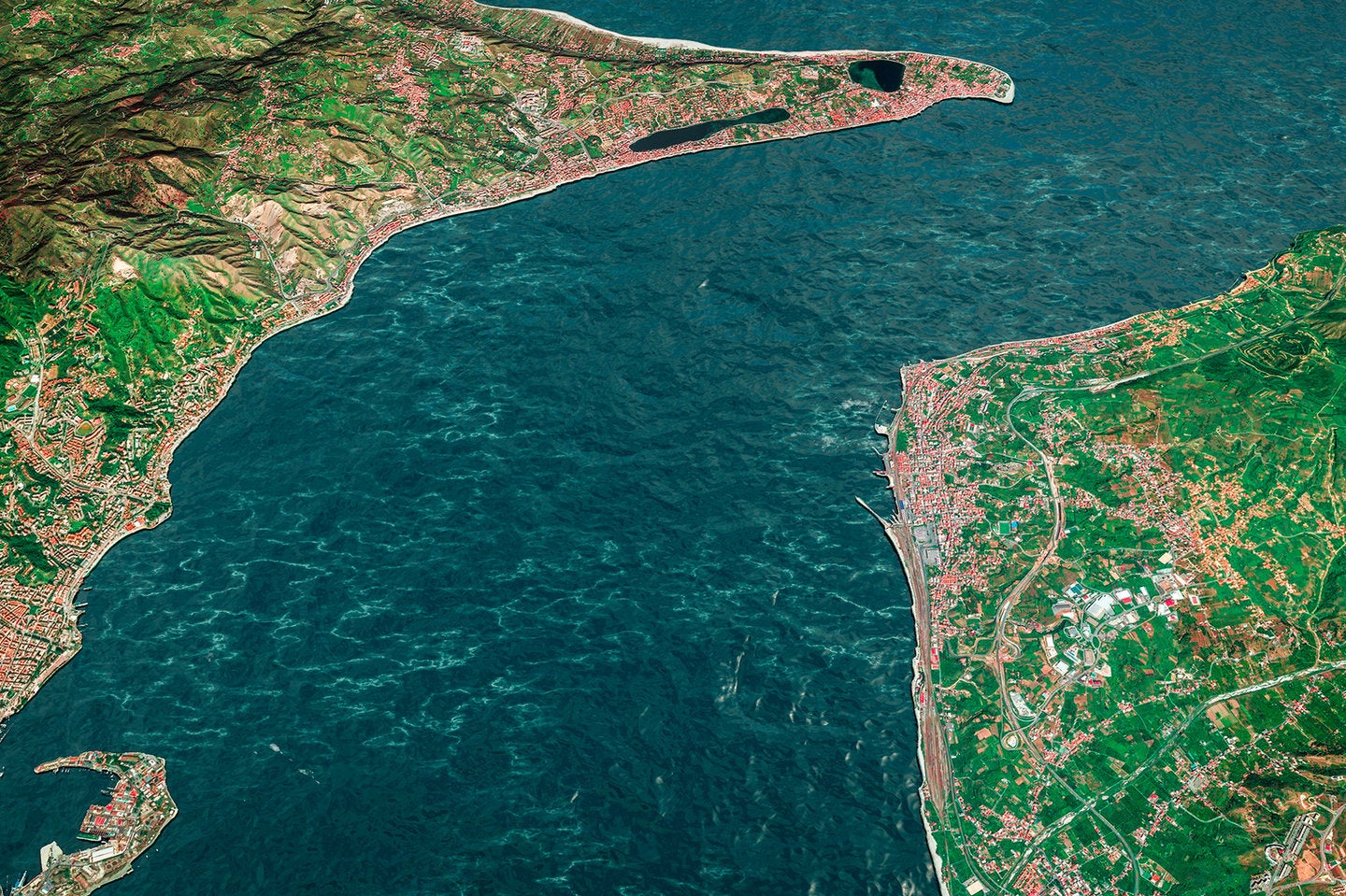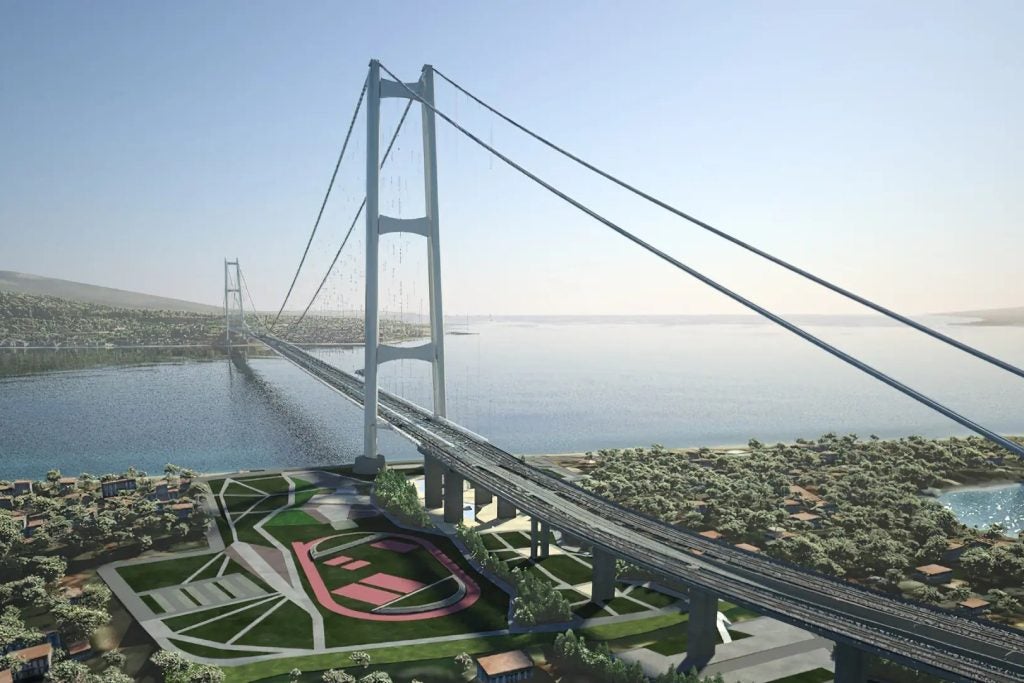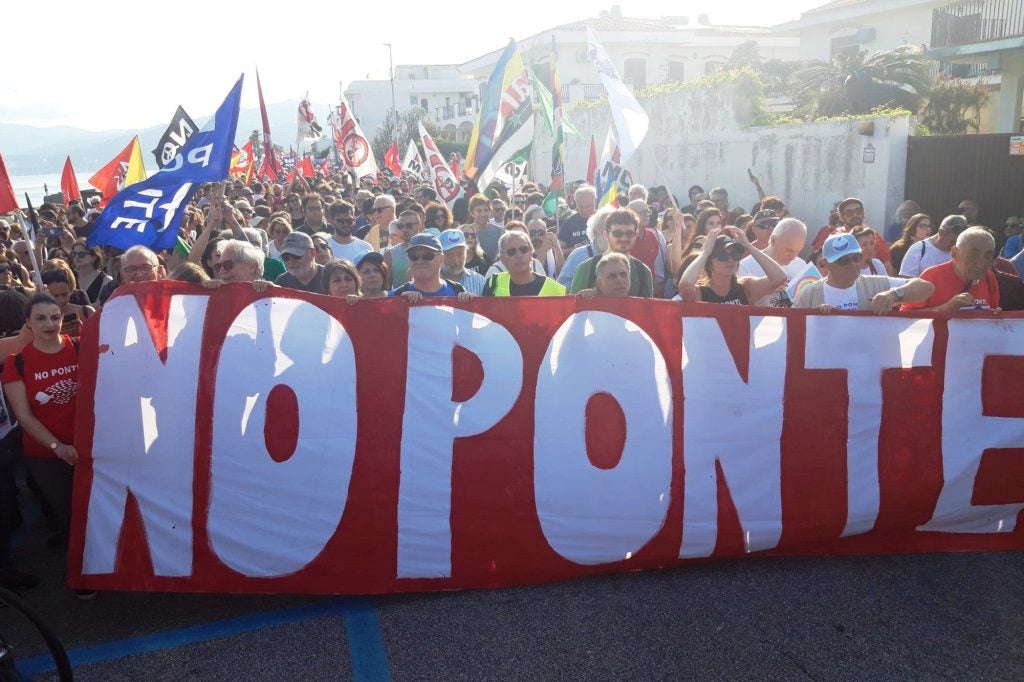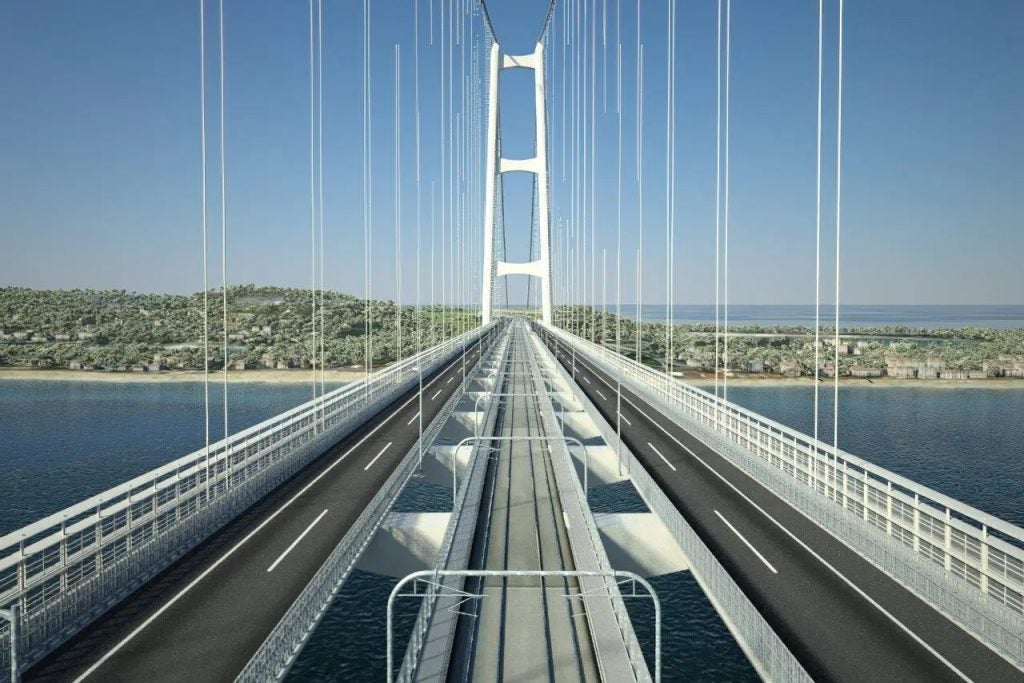
The Straight of Messina Bridge project, often referred to as “the oldest dream in Italy”, has captivated minds for over 2,000 years.
Throughout history, there have been various attempts to build a bridge connecting the island of Sicily to the Italian mainland, but political, economic, and environmental factors have led to delays, uncertainties, and stagnation.
Ideas of the Messina Bridge date back as far as the period of the Punic wars and the project has been a recurring topic of discussion by the Italian Government for centuries.
Following recent advancements including the approval of a decree, brought forward by Italy’s Minister of Infrastructure and Transport Matteo Salvini, and approval from the Meloni Government, the decree became law on 24 May.
Newfound political will for the Messina Bridge
The final vote was 103 to 49, with three abstentions. According to Ansa, Salvini, who says the bridge will be operational by 2032 and is the project’s major supporter, was “exultant”.
If built, the Messina Bridge is set to be one of the world’s longest suspension bridges, with an assumed length of 3.6km and width of 3.3km, with an estimated project value of around €10bn.
How well do you really know your competitors?
Access the most comprehensive Company Profiles on the market, powered by GlobalData. Save hours of research. Gain competitive edge.

Thank you!
Your download email will arrive shortly
Not ready to buy yet? Download a free sample
We are confident about the unique quality of our Company Profiles. However, we want you to make the most beneficial decision for your business, so we offer a free sample that you can download by submitting the below form
By GlobalDataWhen compared to endeavours such as the Danyang-Kunshan Grand Bridge, which stretches 164.8km as part of the Beijing-Shanghai High-Speed Railway, and the Akashi Kaikyo, a 3.9km-long suspension bridge built across the Akashi Strait, the Messina Strait bridge is definitely a feasible project in engineering terms.

Michele Longo, engineering director of Italian construction and civil engineering group Webuild, highlighted the possible transport infrastructure at a Rome parliamentary hearing.
“The span would support three vehicle lanes in each direction and one for a rail. It would support 6,000 cars per hour, and the passage of up to 200 trains per day,” said Longo.
Furthermore, Longo emphasised that the project, which aims at connecting Messina to Calabria on the Italian mainland is expected to “boost the national GDP by €2.9bn per year” and create roughly 100,000 jobs.
The Italian economy and rail industry
The bridge could stimulate growth and development for both regions, according to GlobalData. Linking mainland Italy to Sicily could “create favourable conditions for economic growth and social regeneration in Italy’ whilst reducing the ‘infrastructural deficit of Southern Italy”.
The bridge has been included in the Trans-European Transport Network (TEN-T), a project that emphasises the EU’s plans to build a network of roads, rail, and water links across the bloc. The inclusion in the TEN-T opens the possibility of receiving co-financing from the EU.
It would also support the expansion of the Sicilian rail system and create a high-speed rail line linking Salerno, Reggio Calabria, Messina, and Palermo.
The high-capacity railway between Catania and Palermo is another project in the region, planned to link to the Messina Bridge, which will modernise Sicily’s current railway system and is part of a broader infrastructure plan for Southern Italy.

The Italian Ministry of Transport and Infrastructure says that the bridge will “close a critical missing link” in the Scandinavian-Mediterranean Corridor, connecting the largest European island, Sicily, along with its 4.8 million inhabitants, with the mainland.
According to WeBuild, the bridge over the Strait of Messina will be equivalent to 4% of the total rail and road investments in Italy and will expand freight and transport capacity.
According to GlobalData’s travel and tourism research analytics, rail and road travel account for little over 90% of domestic travel inside Italy.
“Rail and road infrastructure developments tend to increase travel as they improve accessibility and reduce travel times, making shorter stays more viable,” says Nicholas Wyatt, head of research and analysis for Travel & Tourism at GlobalData.
“Travel between Sicily and the Italian mainland is popular. The Messina Bridge project will likely serve to facilitate increased traveller flows and help boost tourism revenues, thus providing a welcome boost to the country’s GDP.”
The environmental impact
Despite its potential benefits, the Messina Bridge project has been fraught with difficulties and delays. Political considerations, government changes, and budgetary restraints have all led to the project being put on hold several times.
Environmental organisations have also expressed worries about the bridge’s possible ecological impact, including the disruption of marine life and the possibility of earthquakes in the seismically active area.
Leandro Janni, Sicily’s regional President of an Italian not-for-profit Italia Nostra Sicilia – which works to “protect and promote” the country’s historical, artistic and environmental patrimony – tells Future Rail that the project received a negative environmental rating and emphasises that the Italian Government will legally need to perform another environmental assessment.

“The environmental impact assessment procedure must be redone from the beginning, given that – as established in the Environmental Code – over five years have passed without the project being carried out and the Environmental Investigation Agency provision must be repeated in strict compliance with the constitution that protects the landscape, the environment, and the ecosystem,” says Janni.
“An assessment of negative impact was given on the Natura 2000 network, protected by the EU, given that the Strait of Messina is included in its entirety in the special protection areas,” Janni continues.
“The creation of a transversal barrier to the migration of wildlife, such as the Messina Bridge, and the destruction of rest and feeding areas, would clearly conflict with the responsibility for the conservation of over 300 species of Afro-Euro-Asian migratory birds.”
Adding to this, Stefano Lenzi, WWF Institutional Relations director, highlighted during a parliamentary hearing in April 2023, that: “The entire Strait of Messina area is a protected area” and put emphasis on the “extremely high and unsustainable” environmental cost of the project.
Could there be more obstacles on the horizon?
The project’s ownership was recently assigned to infrastructure construction company ANAS in 2013 and the Italian Government has repeatedly stated its intention to follow through with the project.
The executive project is expected to be authorised by July 2024, following which construction will commence.
In a statement, Massimo Ferrari, Webuild’s general manager of corporate and finance, highlighted the vision for the bridge.
“Relaunching infrastructure projects must begin with designing new works. But also, by activating projects that are already ready, like the Strait of Messina Bridge,” he said.
“In Sicily, there are 8,000km of new railways planned. The bridge would be the natural prosecution towards Calabria and the North of Italy,” Ferrari added.

While the project has made progress, it is important to note that challenges and uncertainties remain. The cost of the bridge, estimated at several billion euros, has been a point of contention, with critics arguing that the funds could be better spent on other infrastructure projects.
“In Sicily, there are 8,000km of new railways planned. The bridge would be the natural prosecution towards Calabria and the North of Italy,” Ferrari added.
While the project has made progress, it is important to note that challenges and uncertainties remain. The cost of the bridge, estimated at several billion euros, has been a point of contention, with critics arguing that the funds could be better spent on other infrastructure projects.
The future of the Messina Strait Bridge project will ultimately depend on the ability to address these challenges, secure necessary funding, and navigate the complex political and environmental landscape in the future.
This article was originally published in our digital magazine, Future Rail. You can subscribe for free here.







